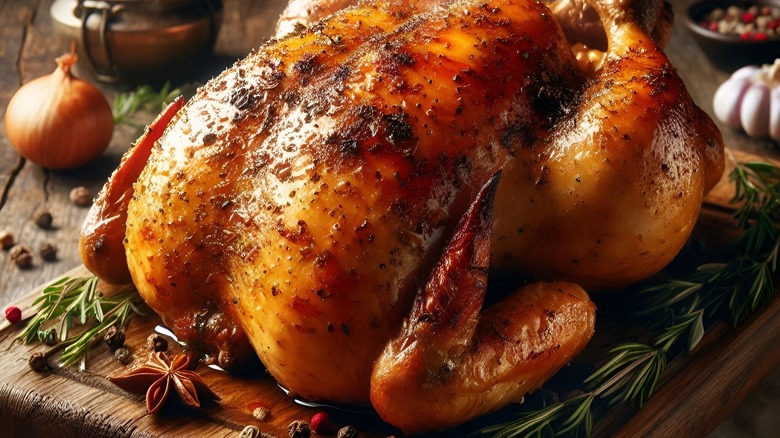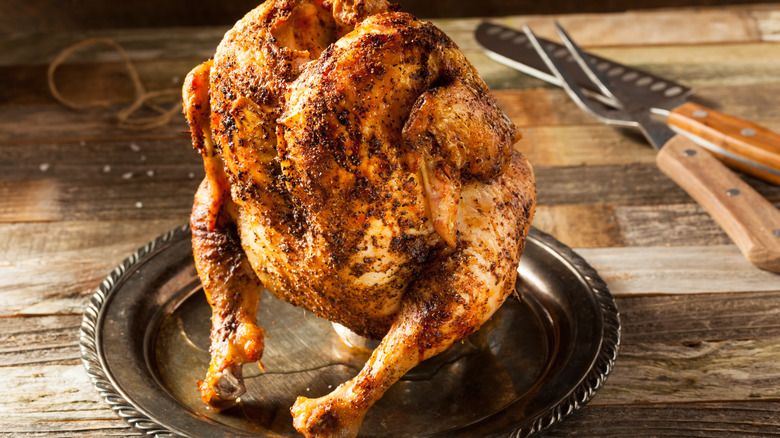Get More Out Of Your Roast Chicken With A Simple Pan Swap
We may receive a commission on purchases made from links.
A whole roasted chicken is one of those recipes that seems daunting, but is fairly straightforward, and something every home cook should get used to cooking. A basic, foolproof roast chicken recipe not only provides a handy tool for whipping up a quick meal, but impresses your guest when the bird is perfectly brown and crispy on the outside while juicy and flavorful on the inside. Brining is helpful, but so is cooking the bird in the right kind of pan. What might be surprising is the right pan might not be the one you think of first.
Placing your chicken in a basic baking dish works fine, but the bottom never gets brown and crispy, and if the sides are too high, your bird may steam as much as brown. You can start by roasting the bird breast-side down, and flip it part way through cooking, but that's not ideal either. The best roasting pans elevate the chicken so all sides are exposed, like the All-Clad or Viking roasting pans with nonstick racks, but those run around $200, and they're a pain to pull out of the back of the cupboard, set up, and clean. Cooking vertically is best, but vertical chicken roasters are also expensive. Instead, consider reaching into your baking cupboard for a pan you probably already have: a Bundt pan. That's right, the same pan that's used to make Minnesota's signature state dessert is actually an excellent option to make crispy, evenly cooked roast chicken.
Perfect roast chicken, thanks to a Bundt pan
The reason a Bundt pan works for roast chicken is because of the center fluted tube, a design feature that helps to evenly distribute heat through the pan. It also holds an oven-ready whole chicken upright beautifully, resulting in evenly roasted chicken with crispy skin on all sides. In fact, this solution is one of the many alternative uses for your Bundt pan beyond cake.
After you've prepared the chicken to your preferences, place the bird's cavity over the center tube, wings up, legs down. It will look like it's sitting upright in the pan, expecting attention. You can truss the legs or don't. The beauty of the pan design (this works with straight-sided tube pans as well) is that you can fill the rest of the pan with traditional aromatics, like onions, potatoes, lemon wedges, and herbs. One trick to reduce cleanup is to cover the hollow tube with a couple squares of aluminum foil. That way the chicken's juices won't leak onto the stove or baking tray.
In general, you'll bake it the same way you would in any pan. Some people find that darker pans give a hotter bake, which may be a deficit to your cakes, but works well with chicken. Make sure the pan you use is on the larger side (a 12-cup Bundt pan is considered to be a standard, large size) to hold the bird and allow space around it to roast properly. If you like basting your bird while cooking, the pan juices should be easy to access with this method.

